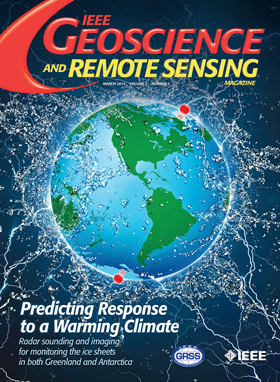DeepBlue: Advanced convolutional neural network applications for ocean remote sensing
IF 16.2
1区 地球科学
Q1 GEOCHEMISTRY & GEOPHYSICS
引用次数: 0
Abstract
In the last 40 years, remote sensing technology has evolved, significantly advancing ocean observation and catapulting its data into the big data era. How to efficiently and accurately process and analyze ocean big data and solve practical problems based on ocean big data constitute a great challenge. Artificial intelligence (AI) technology has developed rapidly in recent years. Numerous deep learning (DL) models have emerged, becoming prevalent in big data analysis and practical problem solving. Among these, convolutional neural networks (CNNs) stand as a representative class of DL models and have established themselves as one of the premier solutions in various research areas, including computer vision and remote sensing applications. In this study, we first discuss the model architectures of CNNs and some of their variants as well as how they can be applied to the processing and analysis of ocean remote sensing data. Then, we demonstrate that CNNs can fulfill most of the requirements for ocean remote sensing applications across the following six categories: reconstruction of the 3D ocean field, information extraction, image superresolution, ocean phenomena forecast, transfer learning method, and CNN model interpretability method. Finally, we discuss the technical challenges facing the application of CNN-based ocean remote sensing big data and summarize future research directions.DeepBlue:海洋遥感的高级卷积神经网络应用
近 40 年来,遥感技术不断发展,极大地推动了海洋观测的发展,也使海洋数据进入了大数据时代。如何高效、准确地处理和分析海洋大数据,解决基于海洋大数据的实际问题,是一个巨大的挑战。近年来,人工智能(AI)技术发展迅速。众多深度学习(DL)模型应运而生,在大数据分析和实际问题解决中大行其道。其中,卷积神经网络(CNN)是深度学习模型的代表,已成为计算机视觉和遥感应用等多个研究领域的主要解决方案之一。在本研究中,我们首先讨论 CNN 的模型架构及其一些变体,以及如何将其应用于海洋遥感数据的处理和分析。然后,我们证明了 CNN 可以满足海洋遥感应用的大部分要求,包括以下六个方面:三维海洋场重建、信息提取、图像超分辨率、海洋现象预测、迁移学习方法和 CNN 模型可解释性方法。最后,我们讨论了基于 CNN 的海洋遥感大数据应用所面临的技术挑战,并总结了未来的研究方向。
本文章由计算机程序翻译,如有差异,请以英文原文为准。
求助全文
约1分钟内获得全文
求助全文
来源期刊

IEEE Geoscience and Remote Sensing Magazine
Computer Science-General Computer Science
CiteScore
20.50
自引率
2.70%
发文量
58
期刊介绍:
The IEEE Geoscience and Remote Sensing Magazine (GRSM) serves as an informative platform, keeping readers abreast of activities within the IEEE GRS Society, its technical committees, and chapters. In addition to updating readers on society-related news, GRSM plays a crucial role in educating and informing its audience through various channels. These include:Technical Papers,International Remote Sensing Activities,Contributions on Education Activities,Industrial and University Profiles,Conference News,Book Reviews,Calendar of Important Events.
 求助内容:
求助内容: 应助结果提醒方式:
应助结果提醒方式:


